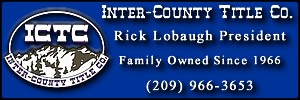December 28, 2015 - WASHINGTON – The Bureau of Land Management (BLM) made major progress in 2015 promoting responsible energy development on public lands while also managing for a wide range of uses on the agency’s 245 million acres. While BLM advanced modern safety and production-measurement regulations, the agency also made progress on the development of master leasing plans for oil and gas areas as well as new landscape-scale planning efforts to achieve both conservation and energy development goals.
“Each accomplishment is significant on its own, but together, they’re a big stride forward in our management of the nation’s energy resources,” said BLM Director Neil Kornze.
Facilitating Renewable Energy Development
The BLM is a national leader in forging a path toward more production of clean, American-made renewable energy. In 2015, the BLM approved five solar energy projects that will bring an additional 977 megawatts of power online once they are built that have the potential to create approximately 5,600 jobs. These approvals put the BLM 75 percent of the way to the President’s Climate Action Plan goal of approving projects that will generate 20,000 megawatts of renewable energy by 2020.
In addition, the BLM approved six transmission projects to help unlock wind and solar resources that cannot be currently accessed due to lack of infrastructure to bring energy to the grid. Among those are the SunZia transmission project in Arizona and New Mexico, that, when built, will add up to 3,000 megawatts of electrical capacity in the Southwest.
Last month, the BLM partnered with the State of California and several other Federal and State agencies to finalize the first phase of the Desert Renewable Energy Conservation Plan, which heralds a new generation of landscape-scale land use planning to achieve both conservation and energy development goals. The plan will allow for timely permitting of solar projects in appropriate areas of the California desert.
Promoting Responsible Energy Development and Modernizing Regulations
Over the past year, the BLM held 22 oil and gas lease sales, generating more than $159 million in bonus bids and rental fees in addition to royalties. Approximately half of this revenue went directly to the states in which the development is located, supporting local economies all across the country.
Years of work at the BLM to modernize its out-of-date oil and gas regulations began to take shape this year in the form of proposed and final regulations. Many of the oil and gas regulations at the BLM have never been updated since they were adopted in the 1980s, soon after onshore leasing became the BLM’s responsibility.
In March, the BLM published its final rule on hydraulic fracturing, an oil and gas extraction technique that has opened up millions of acres to potential development. The rule protects water quality for communities by addressing the soundness of well construction and the handling of water after it is used in the well. It also increases the public’s access to information about chemicals used and other aspects of the hydraulic fracturing process.
This summer and fall, the BLM also published three proposed rules that deal with oil and gas development. These regulations establish the proper procedures for how producers should measure and account for the energy resources they extract from national public lands to ensure that accurate royalties are paid. Public comments on the proposed rules will be taken into account as the final rules are written in 2016.
The BLM’s coal program, meanwhile, took in about $1.29 billion in royalties, rents, and bonuses in 2015. Earlier this year, Secretary Jewell called for a public dialogue about how best to operate the Federal coal program and whether the American taxpayer is receiving a fair return for the mining of public resources. The BLM is reviewing the extensive comments received during five public meetings as it considers how best to move forward.
Mitigating Potential Impact of Development
In October, the BLM approved a drilling permit and a right-of-way grant for the Greater Mooses Tooth One project that will open the way for the first production of oil and gas from federal land in the National Petroleum Reserve in northern Alaska. The permit implements a series of best management practices, lease stipulations, and mitigation measures to prepare for the potential impacts from the project, including establishment of a compensatory mitigation fund. The funds will go toward a landscape-level regional mitigation strategy, currently under development through a collaborative, multi-stakeholder process that includes representatives from across Alaska.
The past year also marks considerable progress for oil and gas leasing reform with the completion of six master leasing plans (MLPs) in Wyoming and Colorado, and the publication of a draft MLP for Moab, the first plan in Utah to reach that stage. MLPs are designed to guide mineral development in a defined area for the foreseeable future by identifying potential resource conflicts early in the planning process.
By providing for more orderly development, MLPs will lend more certainty to industry while limiting the number of protests, which had drastically slowed leasing. As part of the BLM’s broader program of leasing reform, these plans and related initiatives such as more thorough review of lease parcels before a sale have greatly reduced the number of parcels protested. The number of protests has declined dramatically, from 1,475 protested parcels from original lease sale notices in 2009 to 321 in 2014.
The BLM manages more than 245 million acres of public land, the most of any Federal agency. This land, known as the National System of Public Lands, is primarily located in 12 Western states, including Alaska. The BLM also administers 700 million acres of sub-surface mineral estate throughout the nation. The BLM's mission is to manage and conserve the public lands for the use and enjoyment of present and future generations under our mandate of multiple-use and sustained yield. In Fiscal Year 2014, the BLM generated $5.2 billion in receipts from public lands.
Source: BLM








